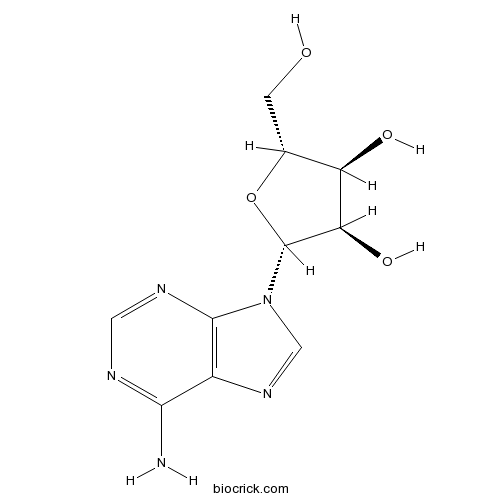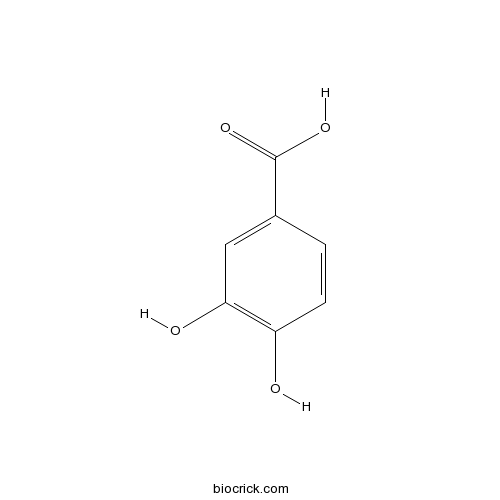Dendrobium devonianum
Dendrobium devonianum
1. The products in our compound library are selected from thousands of unique natural products; 2. It has the characteristics of diverse structure, diverse sources and wide coverage of activities; 3. Provide information on the activity of products from major journals, patents and research reports around the world, providing theoretical direction and research basis for further research and screening; 4. Free combination according to the type, source, target and disease of natural product; 5. The compound powder is placed in a covered tube and then discharged into a 10 x 10 cryostat; 6. Transport in ice pack or dry ice pack. Please store it at -20 °C as soon as possible after receiving the product, and use it as soon as possible after opening.
Natural products/compounds from Dendrobium devonianum
- Cat.No. Product Name CAS Number COA
-
BCN5796
Adenosine58-61-7
Instructions

-
BCN4537
3,4-Dihydroxybenzoic acid99-50-3
Instructions

Host-specificity of symbiotic mycorrhizal fungi for enhancing seed germination, protocorm formation and seedling development of over-collected medicinal orchid, Dendrobium devonianum.[Pubmed: 29299845]
All orchids maintain an obligate relationship with mycorrhizal symbionts during seed germination. In most cases, germination-enhancing fungi have been isolated from roots of mature plants for conservation and cultivation purposes. To understand the germination biology of Dendrobium devonianum, an over-collected medicinal orchid, the seeds of D. devonianum were inoculated with a fungal strain (FDd1) isolated from naturally occurring protocorms of D. devonianum and two other germination-enhancing fungal strains (FDaI7 and FCb4) from D. aphyllum and Cymbidium mannii, respectively. The fungal strain was isolated from five protocorms of D. devonianum and identified as a species of the genus Epulorhiza. In germination trials, treatments with all of the three fungal strains showed a significant promoting effect on seed germination and protocorm formation, compared with the control treatment (no inoculation). However, FDd1 fungal strain showed the greatest effectiveness followed by FDaI7 and FCb4. For all inoculation and control treatments, seeds developed to protocorms regardless of the presence of illumination, whereas protocorms did not develop to seedlings unless illumination was provided. The results of our manipulative experiments confirmed the hypothesis that mycorrhizae associated with orchid seedlings are highly host-specific, and the degree of specificity may be life stagespecific under in vitro conditions. The specific mycorrhizal symbionts from protocorms can enhance restoration efforts and the conservation of orchids such as D. devonianum.
Chemical characterization and immunomodulatory activity of acetylated polysaccharides from Dendrobium devonianum.[Pubmed: 29103502]
None
[Effects of different endophytic fungi on seedling growth of Dendrobium devonianum].[Pubmed: 28901095]
To obtain seedling growth-promoting fungi is a key step in restoration-friendly cultivation of medicinal Dendrobium species, since there are a large number of functionally-unknown endophytic fungi in the roots of Dendrobium plants.In this study, six functionally-unknown endophytic fungal strains were isolated from roots of D.devonianum using single peleton isolation technology, and used in inoculation experiments to test their effectiveness for seedling growth in D.devonianum.After 90 days of inoculation, comparing with the control treatment, FDdS-1, FDdS-2 and FDdS-4 showed strong pathogenic or fatal effects on seedlings; while, FDdS-12, FDdS-9 and FDdS-5 had different effects on seedling growth.FDdS-5 had significant promoting effects on height, fresh and dry weight, stem diameter and root numbers, while FDdS-9 only had significant promoting effect on seedling height, and FDdS-12 had a negative effect on seedling growth.According to the anatomical features of the inoculated roots, FDdS-5 fungi could infect the velamina of seedlings and the existence of symbiosis pelotons in the cortex cells, suggesting that FDdS-5 is a mycorrhiza fungi of D.devonianum.FDdS-5 and FDdS-9 were identified as Sebacina vermifera and Sebacina sp.by molecular technologies.By using FDdS-5 in the restoration-friendly cultivation of D.devonianum, it could effectively promote seedling growth and shorten the seedling growth periods.The results will aid in reintroduction and cultivation of D.devonianum.


